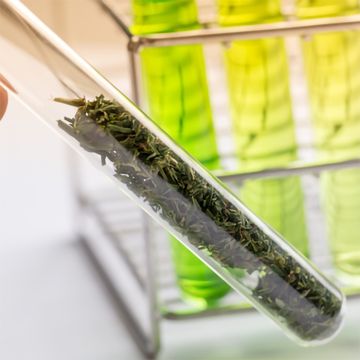QPCR, also known as quantitative polymerase chain reaction, is a sophisticated technique that is widely used in molecular biology research. It enables the quantification of DNA, RNA, or cDNA sequences in a given sample, making it a powerful tool for studying gene expression, gene silencing, and genetic variations.

QPCR works by amplifying a specific region of DNA or RNA using specific primers and fluorescent probes. These probes emit a signal that is proportional to the amount of target sequence in the sample. QPCR instruments detect and analyze these signals to accurately quantify the target sequence.
QPCR Instruments: Overview
There are various types of QPCR instruments available on the market. They differ in the number of samples they can process simultaneously, the level of automation, the accuracy, the speed, and the cost.
The most common types of QPCR instruments are:
1. Real-Time PCR Machines: These are basic QPCR instruments that can simultaneously amplify and detect a single target sequence in real-time. They rely on a fluorophore-labeled probe that binds to the target sequence and emits fluorescence during amplification.
2. High-Throughput PCR Machines: These are advanced QPCR instruments that can process multiple samples simultaneously using microplates or arrays. They are ideal for large-scale experiments and require minimal human intervention.
3. Digital PCR Machines: These are ultra-sensitive QPCR instruments that partition the sample into thousands of micro-reactions, thereby increasing the accuracy and reproducibility of the results. They are ideal for detecting rare mutations or circulating tumor cells.
Choosing the Right QPCR Instrument
Choosing the right QPCR instrument depends on several factors, such as:
1. Sample Throughput: Consider the number of samples you need to process simultaneously and select an instrument that can accommodate your workload.
2. Sensitivity: Consider the level of sensitivity you need to detect your target sequence accurately. Digital PCR machines offer the highest sensitivity, whereas Real-Time PCR machines offer moderate sensitivity.
3. Automation: Consider the level of automation you need to minimize human error and save time. High-throughput PCR machines and digital PCR machines offer high levels of automation.
4. Budget: Consider the cost of the instrument and its consumables. Real-Time PCR machines are relatively affordable, whereas digital PCR machines are expensive.
Advantages of QPCR Instruments
QPCR instruments offer several advantages over traditional PCR, such as:
1. Quantitative Analysis: QPCR instruments enable the quantification of target sequences, whereas traditional PCR only detects the presence or absence of the target sequence.
2. High Sensitivity: QPCR instruments can detect low levels of target sequences with high accuracy, whereas traditional PCR is prone to false-positive results.
3. High Specificity: QPCR instruments use specific primers and probes that target a specific region of DNA or RNA, thereby reducing nonspecific amplification.
4. Speed: QPCR instruments provide results in real-time, thereby speeding up the analysis and reducing the turnaround time.
Conclusion
QPCR is a powerful technique that has revolutionized molecular biology research. It enables accurate and sensitive quantification of DNA, RNA, or cDNA sequences, thereby facilitating the study of gene expression, gene silencing, and genetic variations. QPCR instruments are available in various types, each with its own advantages and disadvantages. Choosing the right QPCR instrument depends on several factors such as sample throughput, sensitivity, automation, and budget.